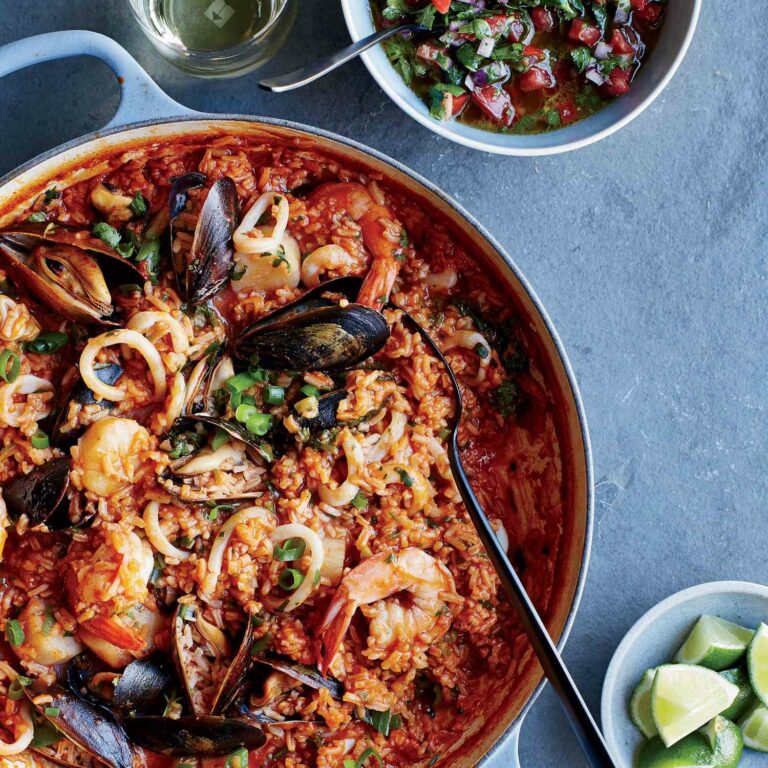Introduction: The Melting Pot of Peruvian Cuisine
Peruvian cuisine is one of the most diverse and rich in the world, thanks to the multicultural influences that have shaped it throughout history. Indigenous, Spanish, and African culinary traditions have blended and evolved over centuries, resulting in a unique gastronomic identity that reflects Peru’s complex cultural heritage.
From the high Andes to the Pacific coast, from the Amazon rainforest to the desert plains, Peruvian cuisine is a reflection of the country’s diverse geography. Its ingredients and flavors showcase the country’s biodiversity, as well as the creativity and adaptability of its people. Today, Peruvian cuisine is considered one of the most exciting and innovative in the world, attracting foodies and chefs from all over the globe.
Indigenous Cuisines: The Foundation of Peruvian Gastronomy
The indigenous peoples of Peru have inhabited the region for thousands of years, cultivating a variety of crops and developing unique culinary techniques. Some of the staples of Peruvian cuisine, such as quinoa, potatoes, corn, and chilies, were already part of their diet long before the arrival of the Spanish.
Indigenous cuisine is still alive and well in Peru today, with dishes like ceviche, lomo saltado, and causa rellena being popular choices in many restaurants. The use of native ingredients, such as ají amarillo, huacatay, and cuy (guinea pig), adds a distinctive flavor to these dishes that cannot be found anywhere else.
Spanish Influence: The Colonial Legacy in Peruvian Dishes
The Spanish arrived in Peru in the 16th century, bringing with them a new culture and cuisine. They introduced new ingredients, such as wheat, rice, and beef, and changed the way food was prepared and served. The influence of Spanish cuisine can be seen in dishes like arroz con pollo, estofado, and papa a la huancaína.
But the Spanish influence on Peruvian cuisine was not only limited to the ingredients and cooking techniques. It also had a profound impact on the social and economic structures of the country, which in turn shaped the culinary traditions of the region. The fusion of indigenous and Spanish cuisines resulted in a unique blend of flavors that has become a hallmark of Peruvian gastronomy.
Afro-Peruvian Cuisine: The African Roots of Peruvian Food
The African slave trade brought thousands of Africans to Peru, where they were forced to work in the mines, plantations, and households of their European masters. Despite the harsh conditions they faced, African slaves managed to preserve their culinary traditions, which are still present in Peruvian cuisine today.
Afro-Peruvian cuisine is an important part of the country’s culinary heritage, with dishes like tacu tacu, carapulcra, and sangrecita being popular choices in many restaurants. The use of ingredients like yuca, plantains, and peanuts, as well as the influence of African cooking techniques, adds a distinct flavor to these dishes that cannot be found elsewhere.
Fusion and Innovation: The Modern Peruvian Gastronomic Scene
In recent years, Peruvian cuisine has experienced a renaissance, with many chefs and restaurants pushing the boundaries of traditional cooking. This has led to a new wave of creativity and innovation, with dishes like tiradito, anticucho de corazón, and chupe de camarones becoming popular around the world.
The fusion of different culinary traditions, as well as the use of modern techniques and ingredients, has created a dynamic and diverse gastronomic scene in Peru. From street food to fine dining, there is something for everyone in the country’s culinary landscape.
Conclusion: The Dynamic and Diverse Peruvian Culinary Culture
Peruvian cuisine is a testament to the country’s rich cultural heritage and biodiversity. The influences of indigenous, Spanish, and African culinary traditions have blended and evolved over centuries, resulting in a unique gastronomic identity that cannot be found anywhere else.
Today, Peruvian cuisine is celebrated around the world for its creativity, innovation, and diversity. From the humblest street food vendors to the most prestigious chefs, the country’s culinary culture continues to evolve and inspire, attracting foodies and chefs from all over the globe. Whether you are a seasoned traveler or a curious food lover, Peru is a must-visit destination for anyone who wants to explore the vibrant and dynamic world of Peruvian cuisine.

